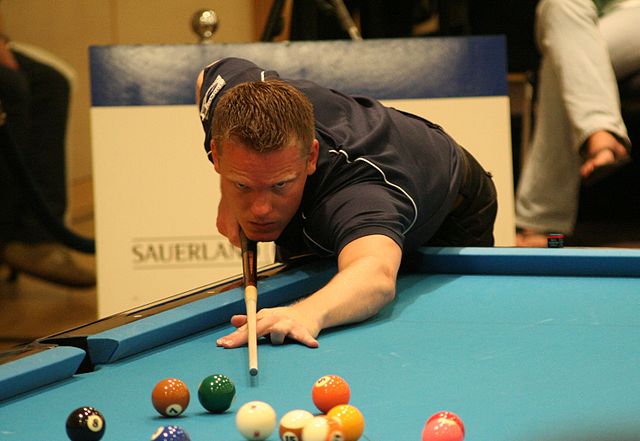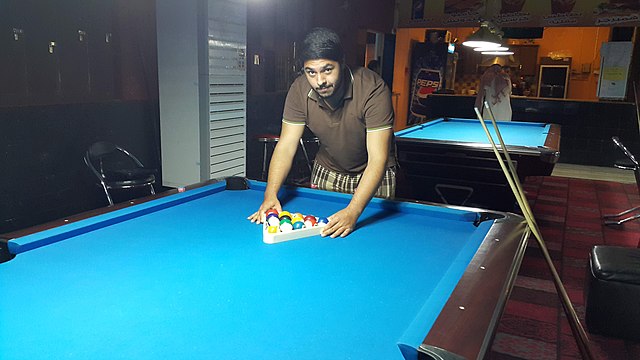A cue stick is an item of sporting equipment essential to the games of pool, snooker and carom billiards. It is used to strike a ball, usually the cue ball. Cues are tapered sticks, typically about 57–59 inches long and usually between 16 and 21 ounces (450–600 g), with professionals gravitating toward a 19-ounce (540 g) average. Cues for carom tend toward the shorter range, though cue length is primarily a factor of player height and arm length. Most cues are made of wood, but occasionally the wood is covered or bonded with other materials including graphite, carbon fiber or fiberglass. An obsolete term for a cue, used from the 16th to early 19th centuries, is billiard stick.
A pool cue and its major parts.
Man playing billiards with cue and woman with mace, from an illustration in Michael Phelan's 1859 book, The Game of Billiards
Billiard chalk
Layered (laminated) tip
Pool is the name given to a series of cue sports played on a billiard table. The table has six pockets along the rails, into which balls are shot. Of the many different pool games, the most popular include: eight-ball, blackball, nine-ball, ten-ball, seven-ball, straight pool, one-pocket, and bank pool. Eight-ball is the most frequently played discipline of pool, and it is often thought of as synonymous with "pool".
Dutch pool player Niels Feijen at the 2008 European Pool Championship
A player racking the balls
Historic print depicting Michael Phelan's billiard saloon in New York City, 1 January 1859.
One of many correct nine-ball racks: the 1 ball at the apex centered over the foot spot, the 9 ball at center, the other balls placed randomly, and all balls touching.








